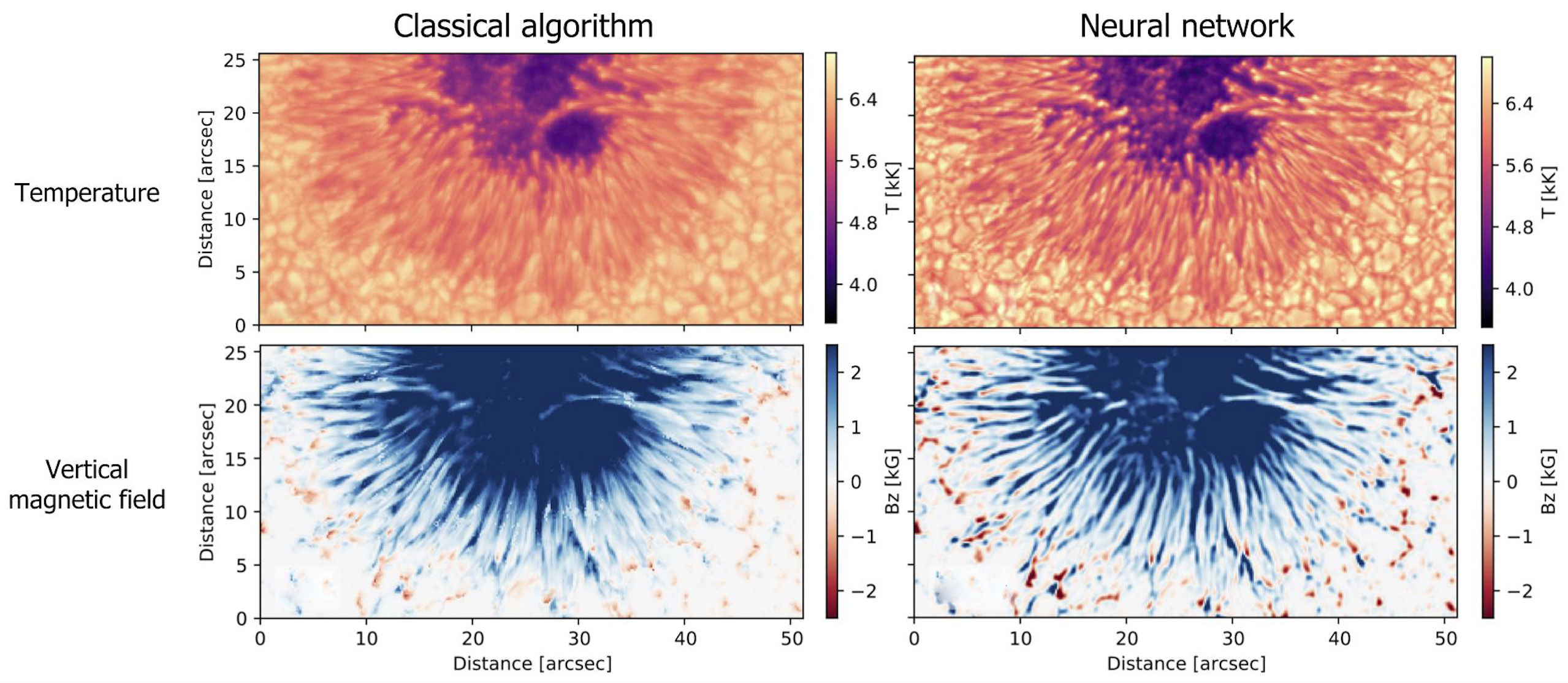Next generation telescopes, such as the European Solar Telescope, will generate vast amounts of data at a very high speed, making it difficult to store and handle them. The solar community is developing new machine learning algorithms to tackle the issue.A post written by Dr. Carlos Díaz Baso, from the Institute for Solar Physics at Stockholm University (Sweden).
 Image credit: Asensio Ramos & Díaz Baso, 2019, A&A, 626, A102
Image credit: Asensio Ramos & Díaz Baso, 2019, A&A, 626, A102
With the European Solar Telescope, the Sun’s surface will be observed in unprecedented detail, allowing the study of very small-scale features and the discovery of fascinating phenomena. The EST –as all next-generation telescopes– will produce data at a speed that it will make it difficult to store and handle all the measurements (we’re talking about Big Data here). Therefore, the analysis of future observations will require the development of complex techniques. Algorithms similar to those used to drive autonomous cars or detect your face to unlock your mobile phone are now being developed by the solar community to efficiently solve difficult problems in solar physics.
All these innovations rely on the enormous advances in machine learning achieved in the last decade, particularly the ability of training very deep and complex neural networks that can improve the performance of specific tasks and are much better (or faster) than classical algorithms. For example, we are now able to accurately reconstruct the horizontal motions of the plasma in the photosphere, speed up deconvolution algorithms to compensate for Earth’s turbulent atmosphere in near real-time, and recover signals under complex noise corruption, using machine learning.
One of the classical methods for inferring physical properties from the observed light is the so-called “inversion code”. By using neural networks to mimic the latest inversion codes that include very complicated physics, we can perform the calculations a million times faster. Whereas classical methods would take several weeks or months to produce maps like the ones displayed in the image (without parallelization), a neural network would give us the result in a couple of seconds.
The image shows temperature maps (first row) and vertical component of the magnetic field (second row) at photospheric levels as extracted from the observation of a sunspot using classical algorithms and neural networks. The blue color means that the magnetic field is pointing towards us. Maps estimated by the neural network appear sharper because they also include correction of the blurring of the telescope. Examples like this one show that we are working hard to be able to handle the incredible amount of data that EST and other next-generation telescopes will produce.
For more information, check Asensio Ramos & Díaz Baso, 2019, A&A, 626, A102
